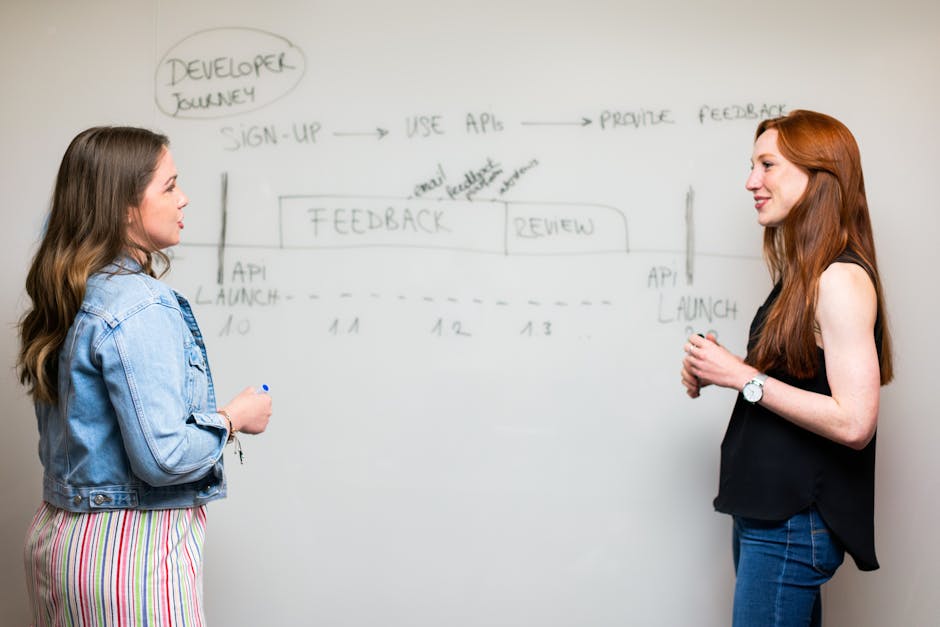The Rise of Employee-Centric Work Software Systems: Revolutionizing Workplace Efficiency
“This article explores the growing importance of employee-centric work software systems in modern workplaces. We delve into the definition of employee centricity, its benefits, and how organizations can implement these solutions to boost productivity, collaboration, and overall employee satisfaction. ”

The Rise of Employee-Centric Work Software Systems: Revolutionizing Workplace Efficiency
In today's rapidly evolving digital landscape, organizations are increasingly recognizing the pivotal role that employee-centric work software systems play in driving productivity, engagement, and overall business success. As we navigate the complexities of modern work environments, it's crucial to understand the concept of employee centricity and its impact on workplace efficiency.

Understanding Employee Centricity in the Workplace
Employee centricity is an approach that places the needs, preferences, and experiences of employees at the forefront of workplace design and technology implementation. This philosophy recognizes that employees are an organization's most valuable asset and that their satisfaction and productivity are intrinsically linked to the company's success.
Defining Employee-Centric Work Software Systems
Employee-centric work software systems are digital tools and platforms designed with the end-user – the employee – in mind. These systems prioritize user experience, intuitive interfaces, and seamless integration with existing workflows to enhance productivity and job satisfaction.
The Benefits of Employee-Centric Work Software
Implementing employee-centric work software systems can yield numerous benefits for both employees and organizations:
-
Increased Productivity: By providing tools that align with how employees prefer to work, organizations can significantly boost productivity and efficiency.
-
Enhanced Collaboration: Employee-centric software often includes features that facilitate seamless communication and teamwork, regardless of physical location.
-
Improved Employee Satisfaction: When employees have access to tools that make their jobs easier and more enjoyable, job satisfaction naturally increases.
-
Better Talent Retention: Organizations that prioritize employee experience through technology are more likely to retain top talent in a competitive job market.
-
Data-Driven Decision Making: Many employee-centric systems offer analytics capabilities, allowing organizations to make informed decisions based on real-time data.

Key Features of Employee-Centric Work Software
To truly be considered employee-centric, work software systems should incorporate several key features:
1. Intuitive User Interface
An easy-to-navigate interface reduces the learning curve and allows employees to focus on their tasks rather than struggling with complex software.
2. Customization Options
Employees should be able to tailor the software to their specific needs and preferences, enhancing their personal workflow.
3. Cross-Platform Compatibility
In today's hybrid work environments, software must be accessible across various devices and operating systems.
4. Integration Capabilities
Employee-centric software should seamlessly integrate with other tools and systems used within the organization to create a cohesive digital ecosystem.
5. Robust Analytics and Reporting
Built-in analytics help both employees and managers track progress, identify bottlenecks, and make data-driven decisions.
Implementing Employee-Centric Work Software Systems
Successfully implementing employee-centric work software requires a strategic approach:
-
Assess Current Needs: Conduct thorough surveys and interviews to understand employee pain points and preferences.
-
Involve Employees in the Selection Process: Include representatives from various departments in the software evaluation and selection process.
-
Provide Comprehensive Training: Ensure all employees receive adequate training to maximize the benefits of the new software.
-
Gather Continuous Feedback: Regularly solicit feedback from employees to identify areas for improvement and address any issues promptly.
-
Measure and Iterate: Use analytics to measure the impact of the new software and make iterative improvements based on data and employee feedback.

The Future of Work-Centric Software
As we look to the future, work-centric software will continue to evolve, incorporating emerging technologies such as artificial intelligence, machine learning, and advanced analytics. These advancements will further personalize the employee experience, automate routine tasks, and provide even deeper insights into workplace productivity and employee well-being.
Conclusion
Employee-centric work software systems are no longer a luxury but a necessity in the modern workplace. By prioritizing the needs and experiences of employees, organizations can create a more engaged, productive, and satisfied workforce. As technology continues to advance, those who embrace employee centricity in their digital transformation efforts will be well-positioned to thrive in an increasingly competitive business landscape.
Implementing the right workplace management software is crucial for creating an employee-centric work environment. By focusing on solutions that truly enhance the employee experience, organizations can foster a culture of innovation, collaboration, and success.